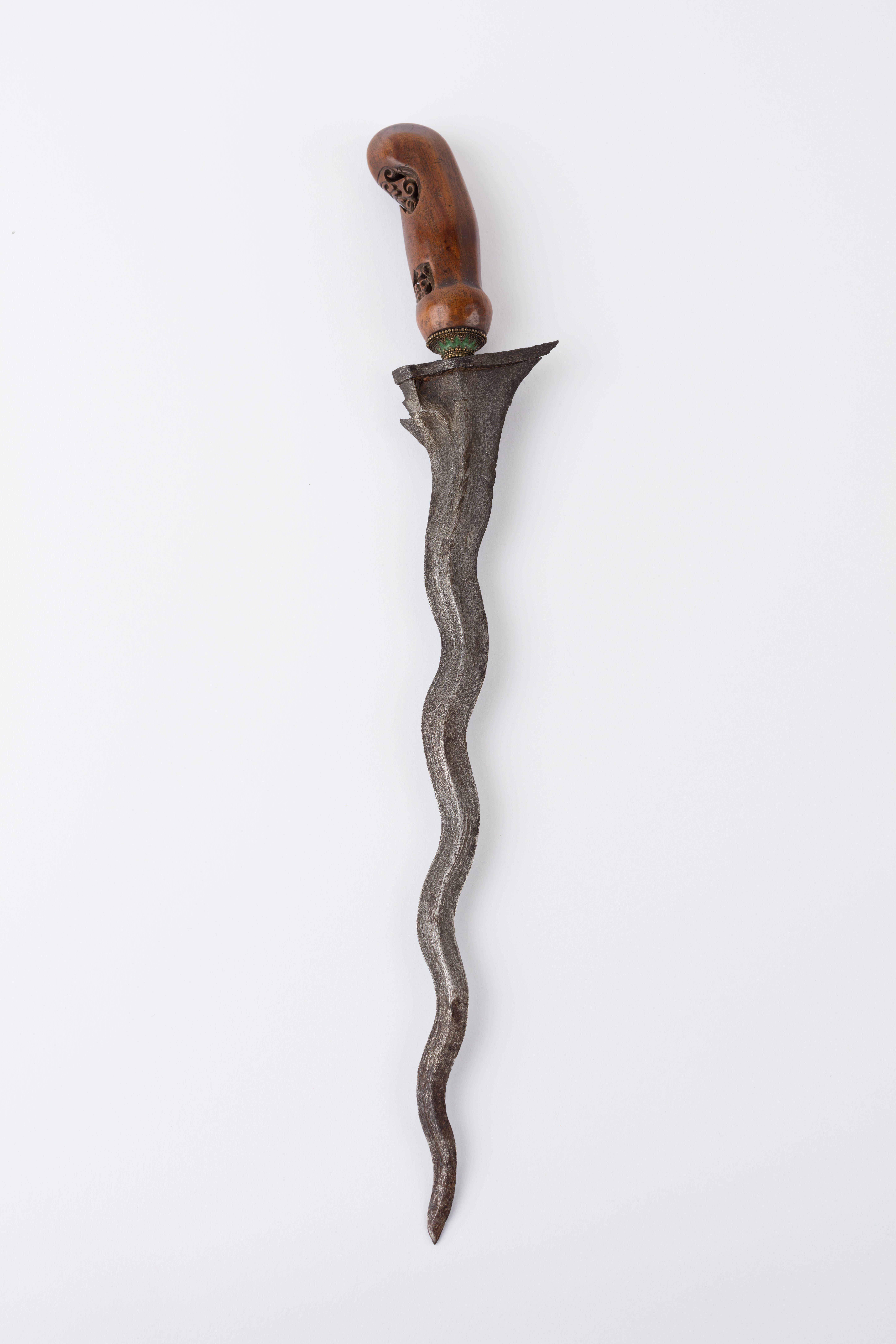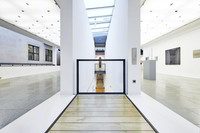Indonesian dagger, so-called kris or keris (Indonesian, Malayan) from Yogyakarta with a wavy, edged pamor (damascening pattern that develops through the forging of several layers of iron and nickel) blade. The blade shows nine notches and has a separate cross piece ("ganja") and a thickened ricasso ("gandik") at the base of the inner grind of the blade to which a small hook is attached ("lambe gajah", elephant's lip). Above there is a bigger bulge, the so-called elephant's trunk ("kembang kacang" or "telale gajah"). Behind the "gandik" at the base of the inner grind there is an immersion towards the middle (so-called "pejetan" with a further, overlying, oblong cavity that is called "tikel alis". Along the blade, is a sunken spine line ("ada-ada" line) that begins in the middle of the blade's base and runs far in the direction of the point. As connecting piece between the blade and the handle serves a ring ("mendak") of the type "angkup randu" with granular band and triangle patterns.
The notched wooden handle exhibits the typical planar Yogyakarta form with two clearly carved out carvings at the inner side that show probably a mask motive, so-called "patra" embellishment.
The kris expands massively in Southeast Asia. The daggers were worn in the war but had also a spiritual meaning. Moreover, the quality depends on the social status of the owners.
The Ulm legal assistant Eugen Braitinger (1880 - 1941) committed the kris together with another one to the museum probably after 1923.
de

